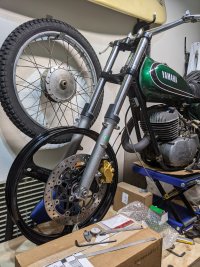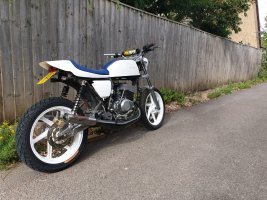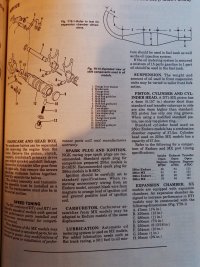TresCuatros
Active Member
I keep updating the wheel/fork section with more technical info, so I figured I'd parse out the info a bit. I use this page a lot for recording thoughts/details online.
Electrical:
Considering Rex Speed Shop 12v & CDI conversion
Need Flywheel Foto1971 (74 DT 250) or F1T350 (late 70's 250)
Once the flywheel has been acquired - call back to Rex and order the matching Rmk # CDI kit
Some people have success with the slotted stator and Foto2173 from the DT 360's, but Rex's was saying it's hit or miss based on who's installing it and may require some machine work. Best to avoid that rabbit hole of complexity and source a drop in 250 flywheel.
9/19/22 Update:
Smaller headache for a little more cost - https://www.vape.eu/en/yamaha-dt-250360400dc-version
Drop in an go 12v conversion with DC power for lights and new flywheel & stator. Boom.
Electrical:
Considering Rex Speed Shop 12v & CDI conversion
Need Flywheel Foto1971 (74 DT 250) or F1T350 (late 70's 250)
Once the flywheel has been acquired - call back to Rex and order the matching Rmk # CDI kit
Some people have success with the slotted stator and Foto2173 from the DT 360's, but Rex's was saying it's hit or miss based on who's installing it and may require some machine work. Best to avoid that rabbit hole of complexity and source a drop in 250 flywheel.
9/19/22 Update:
Smaller headache for a little more cost - https://www.vape.eu/en/yamaha-dt-250360400dc-version
Drop in an go 12v conversion with DC power for lights and new flywheel & stator. Boom.
Last edited:







